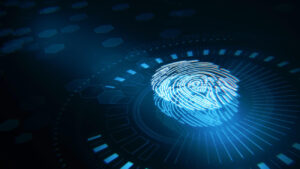There is a difference between our online and offline selves. We identify ourselves online by using a password and a username. Offline, our face and legal name are shown on a tangible ID card that serves as our identification. These identities are entirely distinct: Both our internet credentials and our physical characteristics cannot be used to identify us in person. There is an identity gap, and it has gotten wider in recent years as a result of the pandemic’s effort to move more interactions online. There are more online accounts and passwords, which opens up new security gaps.
There are greater possibilities for criminals to pass as lawful citizens, workers, and customers. The difficulty of establishing their identities frustrates legitimate applicants and recipients. Governmental organizations provide a clear example of how the platform may be utilized to close the identity gap, change operations, and benefit both administrators and those using their services.
Immigration and the border
Border and immigration officials are very concerned with identity verification. Digital ID may greatly simplify contact between immigration officials and applicants. Visitors and immigrants may instantly and unquestionably confirm their claims to identify, giving officials the certainty that the individuals are who they claim to be. Additionally, these exchanges may be briefer, which would increase administrative effectiveness.
Social and online services
Demand for governmental social services soared in reaction to the epidemic, and the possibility of fraud climbed proportionally. Identity fraud incidents have been reported in Medicaid claims, COVID-19 relief payments, and claims for Medicaid, unemployment, and temporary assistance. Social services organizations have a helpful tool in digital IDs that helps them stop fraud like this and provide legitimate claimants faster access to the services they require.
Department for Motor Vehicles
The formal identification document that serves as the foundation for many people’s digital identities is obtained through the DMV. The Department of Motor Vehicles (DMV) is another example of a touchpoint where digital ID can have a real, positive impact. Previously infamous for long lines and administrative tedium, the DMV will see a boost in efficiency as automated database searches quickly scan historical documents for any duplicate pictures or documentation. At this stage, ensuring appropriate identity is a critical first step in preventing and detecting fraud elsewhere.
Way forward
Digitization has radically transformed our society, and it’s apparent that going ahead our life will be spent both offline and online. Therefore, it is imperative to close the identity gap that currently exists. This gap leads to frustration for customers and staff who have grown accustomed to expecting seamless experiences in their interactions, whether it be one-click e-commerce, remote work, or applying for a travel visa. It also exposes security flaws to fraudsters and other bad actors.
It can bridge the physical/digital gap while maintaining end users in charge of their data by adopting a platform strategy for digital identification. And strategically employing both centralized and decentralized frameworks for data storage. This will make life safer and more accessible for everyone.
The article has been published by the editorial board of the Identity Herald. For more
information please visit www.identityherald.com




